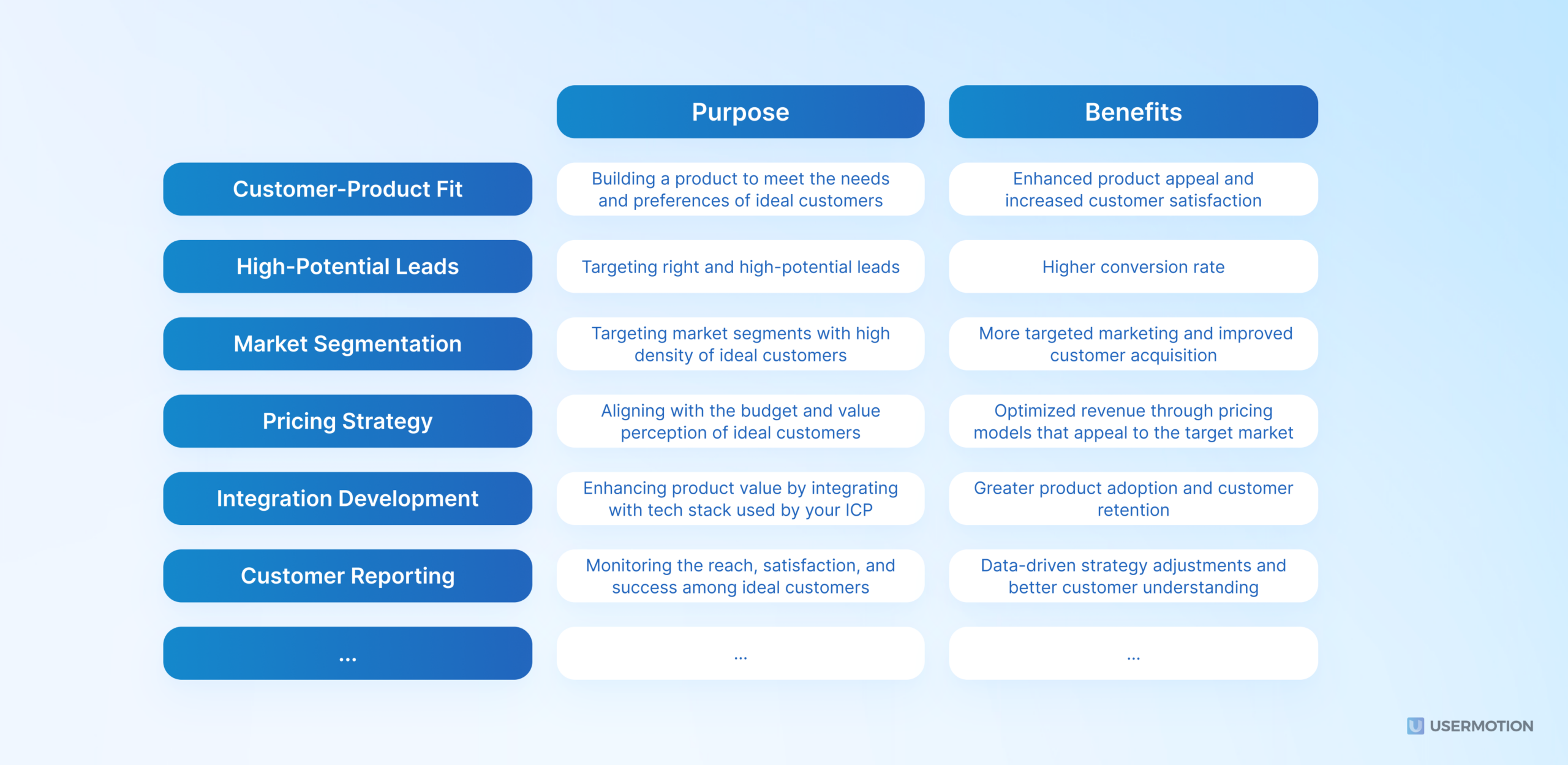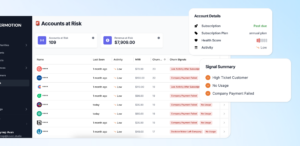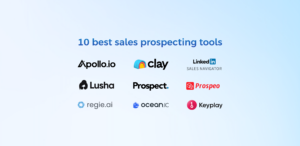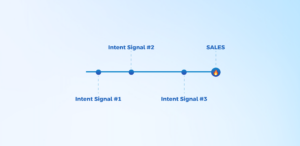We shared how to identify and refine your ICP in our previous article, but without knowing how you can use your ICP in different operations in your SaaS – well, it is useless.
Benefits of ICP
- Match product features to customer needs.
- Identify high-potential leads, avoid unqualified ones.
- Segment the market for targeted marketing.
- Adjust pricing models to match customer budget and value perception.
- Develop integrations with other tools used by the ICP.
- Create reports on customer reach, satisfaction, and success.
- Focus on customization for complex needs of enterprise clients.
- Enhance user experience with specific customization options.
- Align company operations with customer preferences.
- Plan product updates based on customer problems.
- Work with partners beneficial to the ICP.
- Show investors knowledge of the best customer segments.
- Choose new markets with similar ideal customers.
Part 1: Introduction
Ideal customer profile, most commonly used in sales and marketing for specific strategies, but it is more than you think.
You can check UserMotion’s ideal customer profile templates for creating good ideal customer profile.
Last week, I was talking to a SaaS founder for celebrating new year, and the conversation came to ICP. There are several things every SaaS founder think all the time – growth, revenue, product and branding 🙂
You can also check Pipedrive’s ideal customer profile examples.
He said that ICP is one of the key stones that enable them to grow, generate revenue, improve product, and finally place them perfectly in their market.
“Identifying and refining ideal customer profile all the time in our journey is our common practice just like sales and marketing. Every quarter, we analyze how our ICP is working, and we can use it more effective for growth, generating revenue, improving our SaaS, and establishing a strong position in the market.
Part 2: How to Use ICP for the Good of Your SaaS?
It really doesn’t matter if you are at early stage, initial traction, initial scale or scale. We’ll talk about each stage differently but you need to keep this in mind: your ideal customer profile is a dynamic concept that should evolve with your business. It’s not a static target; it’s an adaptable guide.
ICP for Early Stage
At the early stage of your SaaS journey, it’s about understanding who your initial customers could be and what problems your product can solve for them.
During this phase, focus on identifying the key characteristics and pain points of these potential customers. Use this information to refine your product’s features and value proposition.
Regular interaction with early users is crucial; their feedback and activities are invaluable in fine-tuning your ICP to match the real needs of the market.
ICP for Initial Traction
Once your product starts gaining initial traction, your ICP needs to be revisited and adjusted based on real user data.
This phase is about analyzing customer activities, behaviors, preferences, and feedback. Look at who is using your product the most and why.
Are they different from your initial ICP? Do you think your ICP is too narrow and can be detailed? Use these ICP insights to refine your marketing strategies and product development. The goal is to strengthen your product-market fit.
ICP for Initial Scale
As you transition into the initial scale phase, your ICP becomes more about segmentation and expansion.
It’s time to identify sub-segments within your customer base who have unique needs or use cases. Tailoring your strategies to these sub-segments can unlock new growth opportunities.
Additionally, consider how market trends and emerging technologies might affect your ICP. This is the stage to innovate and adapt, ensuring your product stays relevant and competitive.
ICP for Scale
At the scale stage, your SaaS is experiencing significant growth, and your ICP must keep pace. This phase is about deepening your understanding of your customer base and the broader market.
Your ICP here guides decisions about new feature development, potential market expansion, and strategic partnerships. It’s also important to monitor how changes in the industry might impact your customers’ needs and expectations.
Your ICP should inform not just how you grow, but also how you sustain and nurture existing relationships with your customer base.
Part 3: Use Cases

Same ICP rules but different cases. Most SaaS teams cannot see the next step of having a definite ICP – how it can used for higher purposes.
Make your product fit what your ideal customers want and need
First things first: product-customer fit as important as product-market fit. We need to to make sure our product is just what our ideal customers are looking for.
Think about what problems they have, what they like, and what they want to achieve. Then, adjust your product so it meets these needs.
If you know your ideal customers are small business owners who need to save time, you might add features to your product that help them do tasks quicker.
Your product becomes more attractive to them. They’re more likely to use it, and they’ll probably be happier with it. It’s all about making your product match what your customers really want.
Identifying high-potential lead and do not waste your time and resources on unqualified leads
Once you know who your ideal customers are, you can focus on finding leads (potential customers) that match this profile. This helps you avoid spending time and resources on people who probably won’t buy your product.
For example, if your SaaS product is an email marketing tool designed for small e-commerce businesses, your ICP might include characteristics like: small business owners, interested in digital marketing, have a website, and looking to grow their customer base.
When you get a lead, you check if they match these characteristics. If they do, they are a high-potential lead; if they don’t, they might not be the right fit for your product.
By doing this, you make sure that your sales team is talking to the right people – those who really need your email marketing tool and are likely to buy it. This means your team doesn’t waste time on leads that won’t go anywhere, making your sales process more efficient and effective.
Improve your account-based marketing (ABM) strategy
If you have a B2B SaaS product focusing on medium to large businesses, you’ve most probably heard of ABM. Surprisingly, among all, account-based marketing is the best strategy working well with ICP strategy.
Here’s a simple way to think about it: If you know exactly what kind of company makes the perfect customer for your product, you can use that info in your ABM. This means improving your marketing efforts to match these specific companies’ needs and characteristics.
For example, let’s say your SaaS provides advanced cybersecurity solutions. Your ICP might be medium-sized financial institutions that need robust security. In your ABM, you would focus all your marketing resources on reaching these types of institutions. You’d create content, ads, and offers that speak directly to their unique cybersecurity challenges and needs.
Create personas based on your ideal customer profile
When you’re planning how to talk to potential customers, it helps to imagine specific kinds of people who would use your software. These are called personas, and they’re based on your Ideal Customer Profile (ICP). Think of them as detailed sketches of the people most likely to buy your product.
For a CRM business, let’s consider a few personas:
- Startup Founder Sarah: She’s in her early 30s and has recently launched a tech startup. She needs a CRM that is affordable, user-friendly, and can scale with her growing business. She values tools that can automate tasks and provide insightful customer data.
- Sales Team Lead Leo: Leo is in his late 40s and heads the sales department in a mid-sized company. He looks for a CRM that can integrate easily with other tools they use, has robust analytics for tracking sales performance, and features that help manage customer relationships effectively.
- Marketing Manager Mia: Mia, in her mid-30s, works in a larger corporation’s marketing department. She needs a CRM that offers detailed customer insights, integrates with marketing tools, and helps in segmenting customers for targeted campaigns.
Each of these personas must represent the general characteristics of their higher segment, and then a specific traits.
That’s why, while creating personas that your sales team need to, you should be already defined your ICP.
Divide your market into segments where your ideal customers are over-represented for more targeted marketing
It’s smart to split your market into smaller parts or ‘segments‘ where lots of your ideal customers are.
Imagine your SaaS product is a project management tool for creative agencies. First, you identify the common traits of your ideal customers, like being part of a creative agency, needing to manage multiple projects, and looking for user-friendly software.
Next, you divide your market into groups based on these traits. Maybe one group is small creative agencies in urban areas, and another is larger agencies that handle big clients. Each group, or segment, has a lot of your ideal customers.
Then, you create marketing plans for each segment. For small agencies, you might focus on how your tool is cost-effective and easy to use. For larger agencies, you might highlight advanced features that can handle complex projects.
This way, your marketing talks directly to what each group needs and wants. It’s like having a conversation where you’re speaking right to them.
Adjust your pricing models based on the budget and value perception of your ideal customers to maximize revenue
When running a SaaS business, it’s crucial to hit the right note with pricing. This means aligning your prices with both the budget limits and the perceived value of your product in the eyes of your ideal customers.
Think of it as balancing act: you want to price your product so it’s not out of reach for your customers, but also high enough so they see the true value in it.
If your software is aimed at startups, they’re usually budget-conscious. In this case, you might opt for a more accessible pricing tier. On the flip side, larger businesses, valuing comprehensive features, might be open to a higher-priced offering that promises more functionality.
By adjusting your pricing in this way, you can ensure that your product is seen as a worthwhile investment by your ideal customer, encouraging more sign-ups and sustaining your revenue.
Develop integration capabilities with other SaaS tools commonly used by your ICP, enhancing product value and stickiness
It’s about creating a network where your software isn’t just a standalone tool but a part of a bigger, more efficient system.
Let’s say your SaaS is an accounting tool. If your ideal customers, maybe small businesses, frequently use e-commerce platforms, integrating your software with these platforms can make life easier for them. They can sync sales data automatically, saving time and reducing errors.
By doing this, your software becomes stickier – meaning customers rely on it more and are less likely to switch to a competitor.
Not just about adding features; it’s about weaving your product into the daily operations of your customers, making it an essential, not just an option. This not only enhances their experience but also boosts their loyalty to your product.
Create reports on how well you’re reaching your ideal customers, their satisfaction, and your success
Keep tabs on how well you’re connecting with your ideal customers. Are you reaching the right people? Are they happy with your product? Are your strategies working? Making regular reports can answer these questions.
Look at data like how many of your ideal customers are signing up, how they’re using your software, and if they’re staying with you. Feedback from surveys can also tell you if they’re satisfied or not.
These reports are like a report card for your business. They show you what’s working and what’s not. Maybe you’re great at getting customers but they’re not sticking around, or maybe they love your product but you’re not reaching enough of them. By understanding this, you can make smart changes to do better, making sure your software is really hitting the spot for your ideal customers.
Focus on developing customization features in your SaaS product that meet the complex needs of enterprise clients in your ICP
Developing customization features that cater to the complex and specific needs of enterprise clients in your ICP can significantly enhance the appeal of your product. This approach demonstrates an understanding of the unique challenges faced by these clients and positions your product as a tailored solution, leading to higher adoption rates among enterprise customers.
Enhance user experience with customization options that are particularly appealing or necessary for your ICP
When we say customized experiences, it not only means features or services designed for your general characteristics of your ideal customer, but it is also going further into this.
You also need to understand more specific options that might be appealing or necessary for your ICP, such as language options, accessibility features, or industry-specific interfaces.
One of the very simple of these is allowing “Auto Join”. It enables allowing users automatically join to workspace through allowed domain names.
If you enter example.com, anyone with an @example.com email will be allowed to join workspace automatically
This kind of options might seem small, but it shows your commitment to inclusivity and user-centric design.
Make your company’s day-to-day operations, like helping customers get started, fit well with what your ideal customers like
Your company should make everyday tasks, like helping new customers start using your software, really easy and in line with what your customers like.
For example, if your ideal customers are busy small business owners, they’ll want to get started quickly. You could create a simple, step-by-step guide that gets them up and running fast. Or, if your customers are larger businesses that might need more help, offering one-on-one setup support could be a big plus.
Here are some tips:
- Offer help in ways your customers prefer, like chat support, video tutorials, or quick phone calls.
- Ask for feedback after they get started to see how you can improve.
Making the beginning of their journey with your SaaS easy and enjoyable can make your customers more likely to stick around and be happy with your service.
Plan your product’s future updates and features based on what will help solve your ideal customers’ specific problems
When thinking about new features or updates for your software, always keep your customers’ needs in mind. Focus on what problems they face and how your updates can help solve them.
For instance, if your software is used by graphic designers and they struggle with organizing their projects, your next update could include a better project management feature. This shows you understand and care about their specific challenges.
Here’s how to do it well:
- Regularly ask your customers what challenges they face.
- Pay attention to how they use your software and what features they use the most.
- Think about new trends or changes in their industry that might affect them.
By planning your updates this way, your software stays helpful and relevant to your customers.
Work with partners who can help or interest your ideal customers
Working with partners that can bring something special to your customers is also a great use case for identifying SaaS ICP. These partnerships can give your customers more value.
Let’s say your software helps people manage social media. Partnering with a company that offers great image editing tools could be perfect. Your customers get more tools to make their social media stand out, and both companies can benefit.
Here are some ways to make partnerships work:
- Look for companies that offer something your software doesn’t, but your customers need.
- Plan joint marketing campaigns to promote both services.
- Think about special deals or integrations that make both products work better together.
By choosing the right partners, you can offer your customers more and make your software a go-to choice in your market.
Show investors you know who your best customers are
It’s important to show your investors that you know exactly who your best customers are. This means sharing clear information about your ideal customers and how your business is great for them.
If your software is popular with small online retailers, you should have data showing how these retailers benefit from using your software. Maybe you have stories of customers who increased their sales with your help.
Some tips:
- Gather all necessary data about your ideal customers and create a proper documentation.
- Collect success stories or testimonials from these customers.
- Explain to your investors how your plans are designed to help these specific customers.
You can help your investors see that you have a solid plan and know how to make your customers happy. This can make them more confident in your business and its future.
Pick new markets to enter where people like your ideal customers are
When looking to grow your business, it’s smart to find new places where people just like your ideal customers are. This means going into markets where there’s a lot of people who fit the profile of your best customers.
Here’s how to do it:
- Research to find out where similar customers are. This could be in different cities, countries, or even online communities.
- Check if these new places have people who need and can benefit from your SaaS.
- Plan how to reach out to them, maybe with marketing that speaks to their specific needs.
By choosing the right new markets, you can find more people who’ll love your software, helping your business grow in the right direction.
Part 4: Identifying your SaaS ICP is One of Your Biggest Win
Contrary to the most common approach, the ideal customer profile is not just a tool for marketing and sales teams to make use of when generating leads or closing deals.
Most cannot see the next step of having a definite ICP – how it can used for higher purposes.
There are some specific areas where a good ICP strategy is influential. Growth, revenue, product-market fit, and branding.
Identifying, refining and using ideal customer profile all the time in your business journey should be a common practice.
At certain periods, analyze how your ICP is working, and you can use it more effectively for growth, generating revenue, improving your SaaS, and establishing a strong position in the market.





